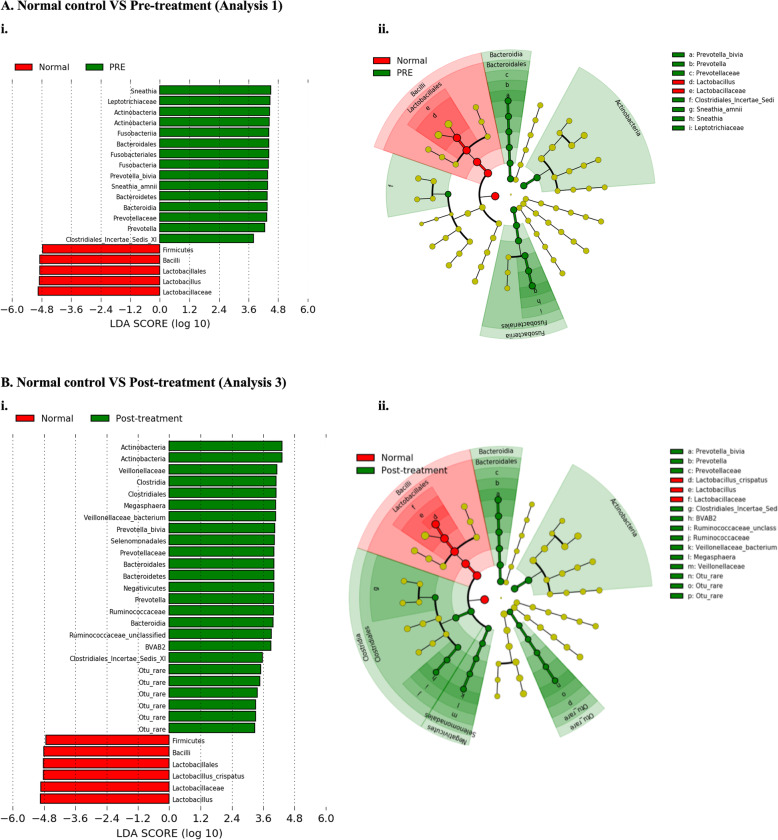Fig. 3.
LEfSe analysis identified vaginal microbiota differentially abundant taxa in the comparison of women pre-treatment (analysis 1) and post-treatment (analysis 3) versus normal untreated controls. A Analysis 1: Prevotella bivia and Sneathia amnii were significant represented at a species level in women prior to treatment compared to untreated controls. B Analysis 3: Prevotella bivia remained to be significantly overrepresented post-treatment, along with BVAB2 compared to controls, who had significantly higher levels of Lactobacillus crispatus. There were no differentially abundant taxa for the comparison before and after treatment, and therefore, neither a histogram nor cladogram can be generated (analysis 2). Histogram of LDA scores was found to differ significantly in abundance between women who had normal cytology pre-treatment (analysis 1) or post-treatment (analysis 3) compared to normal, untreated controls. (i) Cladogram representing the taxa at all phylogenetic levels with significantly different abundance in the compared two groups. The size of the circle is proportional to the abundance of taxon represented. LDA, linear discriminant analysis. NB. Analysis restricted to top 20 taxa with all remaining taxa denoted as ‘other’

